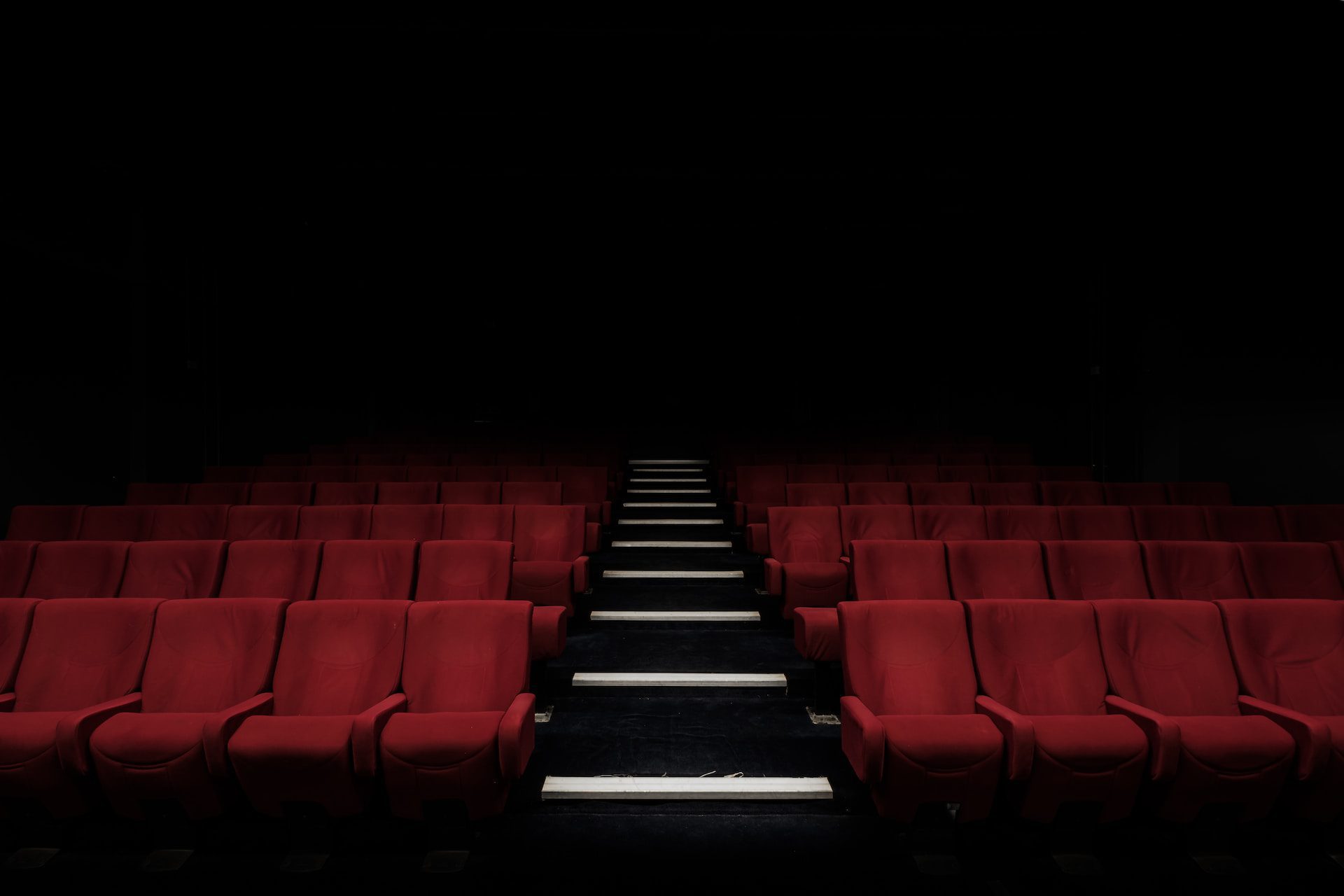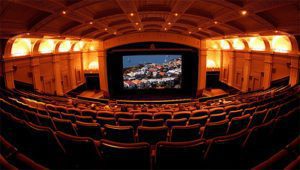Over the last few weeks there has been tons of discussion about the future of the cinematic experience, that is, the practice of watching movies in actual movie theatres (as opposed to the 55 inch/7.1 surround sound setup in your living room. ?The epicenter of said discussion was CINEMACON – the annual?convention where studios tout their upcoming cinematic product for the next year to the National Association of Theatre Owners (NATO). ?In a nutshell, it’s paradise for movie nerds… particularly those who nerd out on the business of movies and movie theatres. ?If IMAX, Dolby Cinema, XD, RPX, 11.1 surround sound, gargantuan wide screens and plushed out recliner seating is your thing, then CinemaCon is where you wanna be (Going to the Con myself is my top 5 Bucket List items…pray that I get to cross THAT off next year!)
Between all the studio presentations, surprise screenings and innovative ideas on how to perfectly butter your popcorn & make your recliner movie theatre seats more comfy, the big ticket debate was on the ever-creeping VOD market, an issue that studios and theatre chains are forced to deal with. ?Right now, a movie released by a major studio has an agreed upon 90 day window between exclusive movie theatre time and home availability. ? Thanks to?movie theatre hater #1? Netflix’s ongoing popularity and?folks not wanting to be bothered with going to the movies anymore, studios are seeking to decrease that window to 30-45 days with home access being granted to studio films at $30-50 bucks a pop.
Of course, there are pros and cons to this plan. One of the BIG cons is the fact that studio profit margins stand to be severely undercut if this Premium VOD (their name…not mine) plan takes hold. ?Instead of each family dropping matinee money to see Shrek 5 (with each parent and each kiddo paying a set admission price), now a bunch of families can meet up at either the community clubhouse or the supercool neighborhood house with the 85 inch 4K flatscreen to watch it on a Saturday night for ONE $30-$50 flat rate. ?In addition, movie theaters make money the old fashioned way: butts in seats buying tickets, popcorn, Coke/Pepsi/Icee, hot dogs and candy. ?Take that away from them and their profits will NOSEDIVE!
All of this blame is (unfairly) being put on the theatrical experience. ?Yeah, the popcorn is overpriced and the teens glued to their phones is a pain. ?Your 70 inch with accompanying 7.1 surround sound may even sound as good – maybe even BETTER – than the theatre across from the mall?(ESPECIALLY if they haven’t updated the place since 1999!!!). ?But, trust me, there’s a BIG difference between seeing Star Wars: The Last Jedi on your TV and seeing it on a?screen like THIS!
(That’s the world famous Chinese Theatre on Hollywood Blvd. ?Everyone knows about the Walk of Fame and the footprints in cement, but they actually show movies inside. ?On THAT enormous screen!)
Yeah, I know. ?Big screens don’t matter to everyone. ?Neither do big sound systems. ?I tend to agree. ?Your sound may be booming and you may have 360 degree wraparound capability but it don’t mean a thing if your movie has no quality.
I hate to say it but QUALITY is the very thing that’s drawing audiences to Netflix. ? The studio system is not the smoothest gateway to creative freedom for artists. ?I’ve complained in several forums that movies that are not so much written from the mind of an eagle eyed writer/director but, instead, are “designed” in boardrooms where studio bosses piece projects together like jigsaw puzzles. ?Concept must match star power must match domestic box office potential must match global box office potential must match toy/t-shirt/video game revenue potential and on and on and on. ? All of this potential rests on the films ability to reach their “four quadrant target” – the ability for the film to appeal to
- Males under 25 years old
- Females under 25 years old
- Males OVER 25 years old
- Females over 25 years old
If a film can hit those 4 targets, or “quadrants,” then the studio will sink tons of money into film by film rolling them off the assembly line year by year.
THE PROBLEM: Most studio fare will at best hit either quadrants 1&2 or 3&4. ?It’s rare to hit all four…unless you’re Disney. ?Disney has figured this thing out. ?While other studios are content to make 1&2 or 3&4 quadrant product and line it up and down their calendar, Disney has transitioned into the bulk of their films being 4 quadrant EVENTS. ? Look at their last few (and upcoming) titles. ?Star Wars: The Force Awakens. ?Zootopia. ?Jungle Book. ?Captain America: Civil War. ?Finding Dory. Doctor Strange. Moana. Rogue One. ?Beauty And The Beast. ?Guardians Of The Galaxy Vol 2. ?Pirates of the?Caribbean: Dead Men Tell No Tales. Cars 3. ?Star Wars: The Last Jedi.
All big ticket movie events designed to get all four targets off the couch and into the multiplex. ? By the way, Disney is the only studio NOT IN NEGOTIATIONS to shorten the release window. ? (With titles like those, would you shorten it?)
Every other studio will have an event title or 3 throughout the year. ?But not like The House of Mouse. ?To me, that’s both the problem AND the answer. ?The Cinema must be the exclusive domain of event-based titles. ?The smaller, prestige Oscar bait stuff doesn’t need to be fiddled with come December. ?But as the success of Logan (despite my SF colleague Arnaldo Reyes’s misgivings), Get Out & Kong: Skull Island has proven – all 3 films grossing over $160 million BEFORE summer kicks off – Event based titles will keep the cinematic experience alive and kicking. ? They can’t just make them for the sake of making them (cough-BvS-cough). ?They’ve got to make them GOOD. ?If the quality ain’t on point, the people will stay home. Simple as that.
Here’s hoping the suits in Hollywood will take note.










